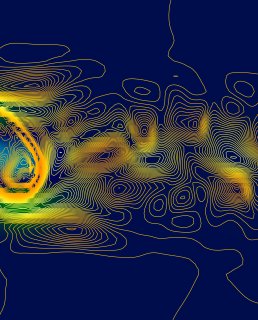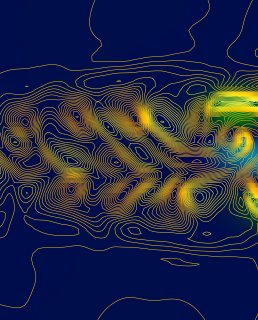
Honorable Mention, 2021
This is an image generated by simulating a modified version of a mathematical process called Conway’s Game of Life. In it, one imagines an infinite grid on which organisms are allowed to live, but not move. Each pixel represents an organism and it lives or dies based on how many alive organisms are neighbors to it. At each time step, the vitality of each organism (indicated by the pixel’s color) is updated according to these rules. Though the rules are simple, the resulting patterns that arise can be amazingly complex and unpredictable. John Conway’s initial formulation of these processes, called cellular automata, was motivated by their implications in theoretical computer science and based on previous work by von Neumann and Ulam. He expected that cellular automata should exhibit a kind of “universal” behavior that allowed them to simulate any kind of computation through their patterns. My motivation to study them was to investigate how certain modifications to the rules can produce automata that have intricate geometric properties, such as fractal structure and chaotic behavior.
*This figure is in part dedicated to the late John Conway, who was a prolific mathematician and contributed this and much more to the world of mathematics.
Credit:
George D. Torres
Mathematics Graduate Student




